
A lecture I presented where we dove into the theory of different design processes.
I got a knock in my inbox from General Assembly asking I’d be interested in teaching UX to an aspiring group of Melburnians. Challenge accepted! I had 3 months to help my students become job-ready.
A look back at the journey of teaching at General Assembly.
Teaching was brand new to me. I never imagined what the motivations, challenges and stresses of a teacher might be. I quickly found out.
Nigel, my co-instructor, helped me a great deal. As a graduate-turned-instructor he knew all the ins and outs of the curriculum, and I owe him a great deal for the success of our course.
No nonsense
I taught beyond what's packaged in the standard curriculum, and gave students all the advice I needed when starting my career. Things like:
"Companies that use the term ‘UX/UI’ usually have no idea about the difference between the two."
"If you don’t involve stakeholders in your design process expect shit to hit the fan when you present your work."
I showed them how to bring risk forward in a project, how to involve stakeholders so you don't have to sell ideas to them, instead they become part of the team. I preached, preached and preached success metrics, and focusing on measuring the business impact they're making.
"If you don’t measure your own success, somebody else will. Don’t only talk about the work you did. Tell me what impact you made in the end."
If only I had a dollar for every time I reiterated the importance of measuring impact.
Reaping the rewards
The beauty of teaching is planting the seeds of knowledge and then watching them sprout. Teaching design sprint facilitation, then weeks later seeing students independently running a design sprint on my way to class.
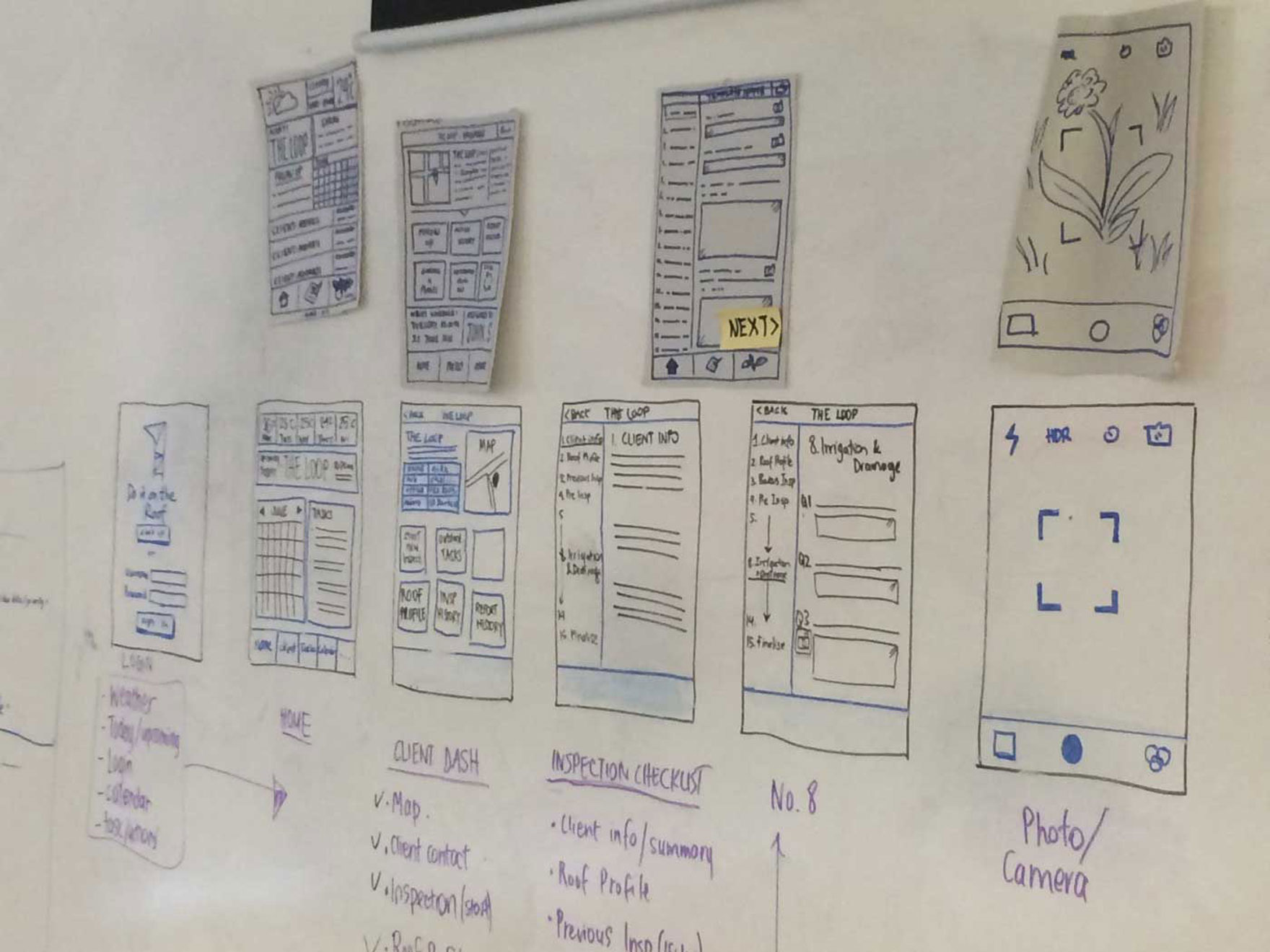
Students self-improvising on a whiteboard after a lecture on the value of paper prototyping.

A team gathering around a moodboard after a lesson on the value of putting ideas out in the open and discussing them with the team.
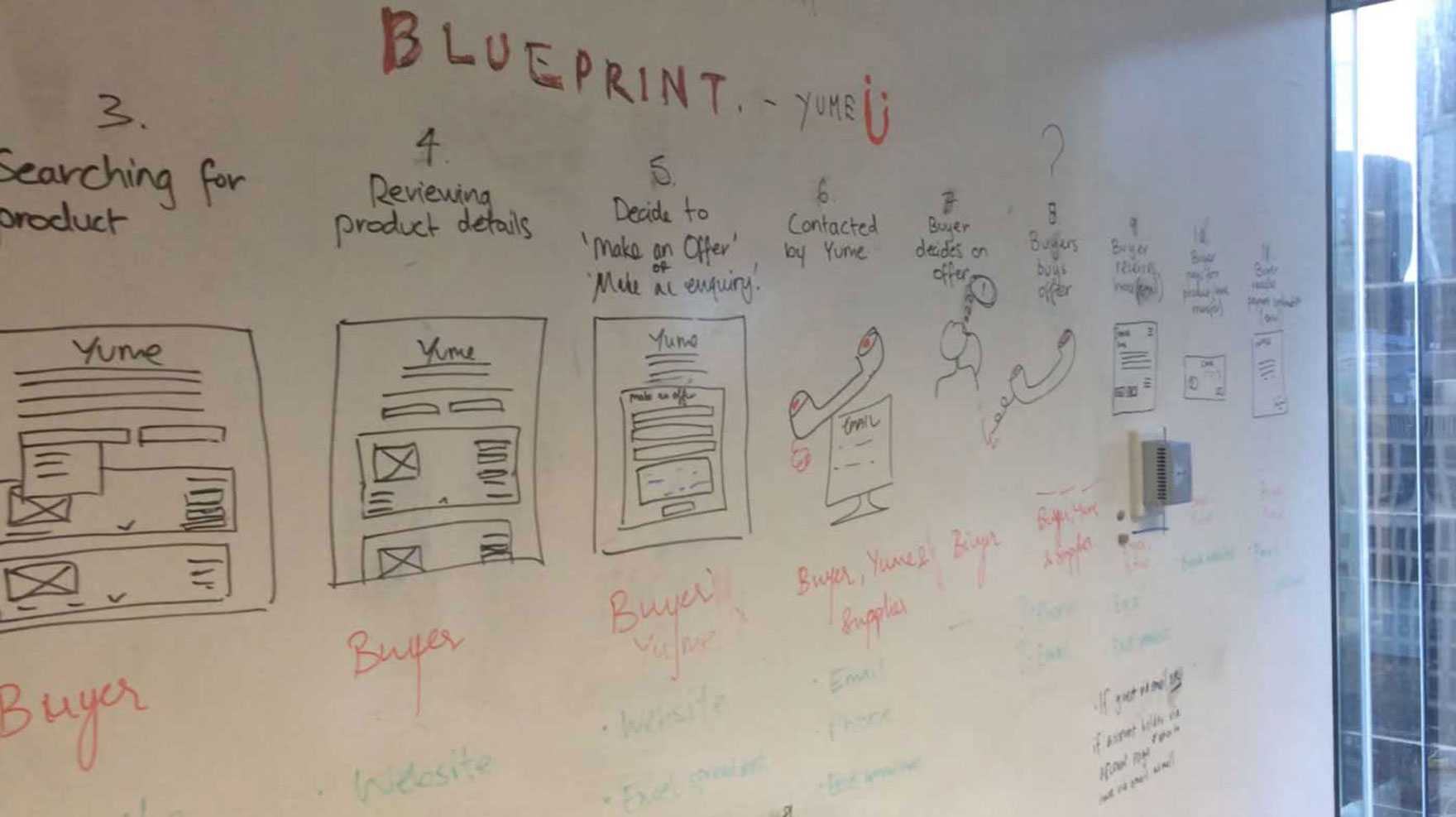
Students running their own service blueprint exercise, after I gave a lecture on the value of mapping out business processes.
I love seeing these artefacts pop up around campus. They were absorbing information, and practising it, adding their own twist to each exercise, seeing what works and what doesn't. I felt like a proud parent.
Teaching leads to mastery
The teaching relationship wasn't simply one-directional. I didn't just teach. I learned a lot. Being the "expert in the room" forced me to quickly work on my own weaknesses, and to double check my information before passing it on. As a personal takeaway, I feel more confident with public speaking.
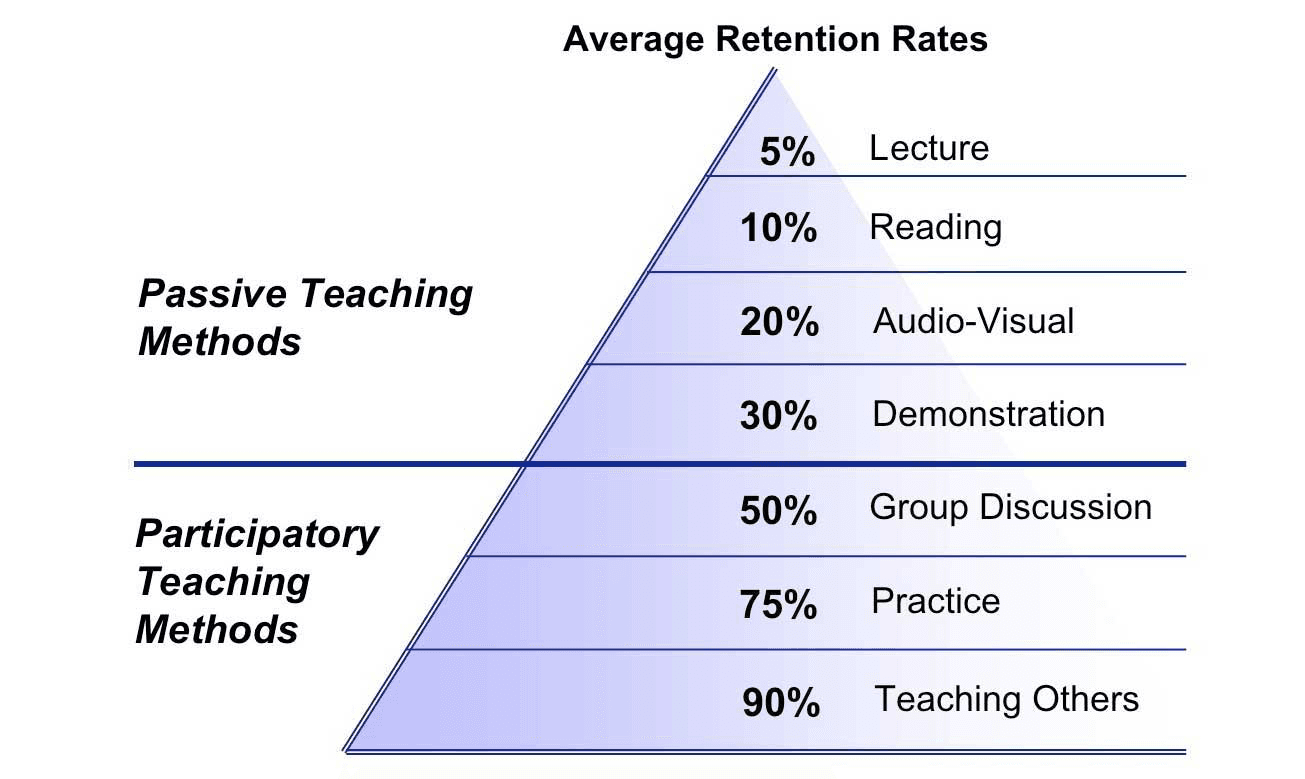
Teaching is a way of solidifying your knowledge and mastering your art.
"When one teaches, two learn." — Robert A. Heinlein
Students showed me new ideas. Like the time I taught a session on creating a LEAN canvas, and then saw students use them for a collaborative session with clients to better understand the problem. Never thought of doing that with freelance clients. That’s a keeper.
Teaching is full of surprises
One of my students spent a good 20 years as an industrial designer at Holden, and I was supposed to be his teacher? It took a while to sink in that "hey, I might be younger but I am the one with the domain expertise when it comes to UX". After a few days I was teaching with confidence.

None of the work I did in my past prepared me for the "people issues" that inevitably come up as students formed into teams on real-world projects. Conflicting personalities, events in people’s lives getting in the way, frustrations with projects. Luckily, I’ve been there myself as an employee, so I know what it’s like. My approach: be transparent, talk to people in a down-to-earth manner and use common sense.
Inviting old friends
I was lucky to have met some real experts from different fields during my time at Envato, and I invited them along to share their wisdom.
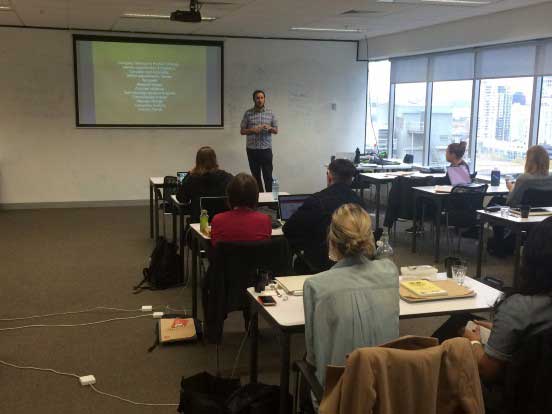
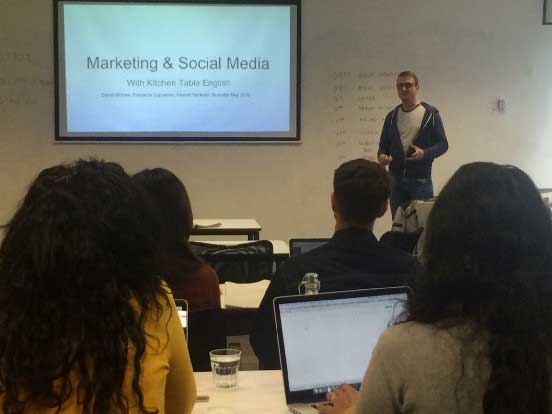
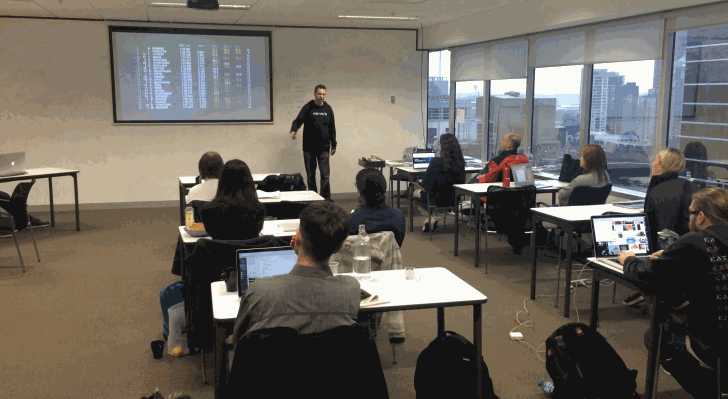


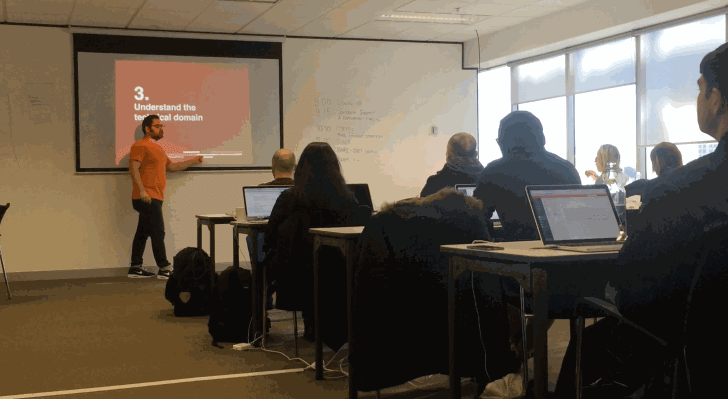
Thanks for coming Julian Stevenson (product management), Dan Michael (marketing), Chris Thelwell (design leadership), Fabiano Morais (Agile and visual facilitation), Fiorella Rizzà (UX copywriting) and Ioanis Hristodoulou (design anthropology) from Envato.
Practice > theory
Practice makes perfect. And, it makes for faster learning. Nothing gets people switched on like “okay, time for an exercise!” and only during the practical component does the theory really sink in.
Theory, practice, theory, practice, repeat.
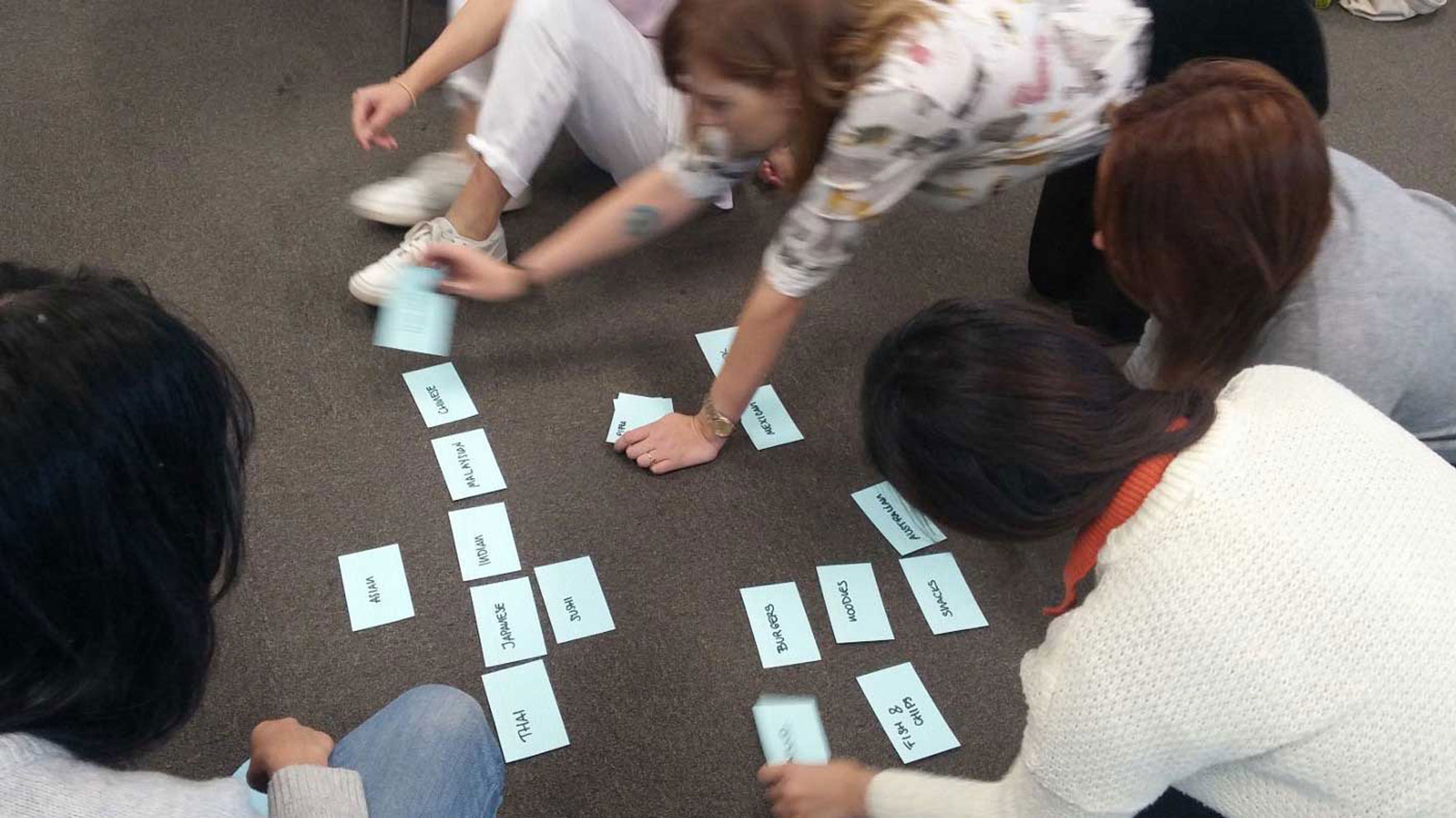
Inconvenient card sorting.

More convenient way of running card sorting.

Design studio exercise: Create a VR app to help sell real estate property.
Things I’d do differently next time
Even higher practice:theory ratio — after seeing the benefits of doing an exercise following every bit of new theory learned, I wish I had prepared more exercises during the earlier lectures.
Venture off-curriculum even more — this was gold, and some of the best feedback I got from students was during the times I decided to talk design studios, facilitating design collaboration, service blueprints, LEAN canvas and talking war stories from 7 years of industry experience.
Ease people into team work — it’s always going to be a ‘learn to swim by diving in the deep end’ kind of experience, but looking back we could have eased people into working with teams.
Ask GA to organise a group project with students from the design, web development and product management immersive courses — we toyed with this idea at one point, but didn’t have the time to make it a reality. Being able to work in a cross-disciplinary team would have been invaluable for everyone involved.
That’s all folks!
Big thanks to Nigel, Matt, Jonathan, Mia and Jess and everyone at General Assembly for their help over the last three months.
To the students, thank you all for this unforgettable journey. May your processes be LEAN, your stakeholders open-minded, your user research participants abundant and your success metrics measurable and fruitful.
In loving memory of my dear friend and colleague, Alex Lieberman.
Explore all work
